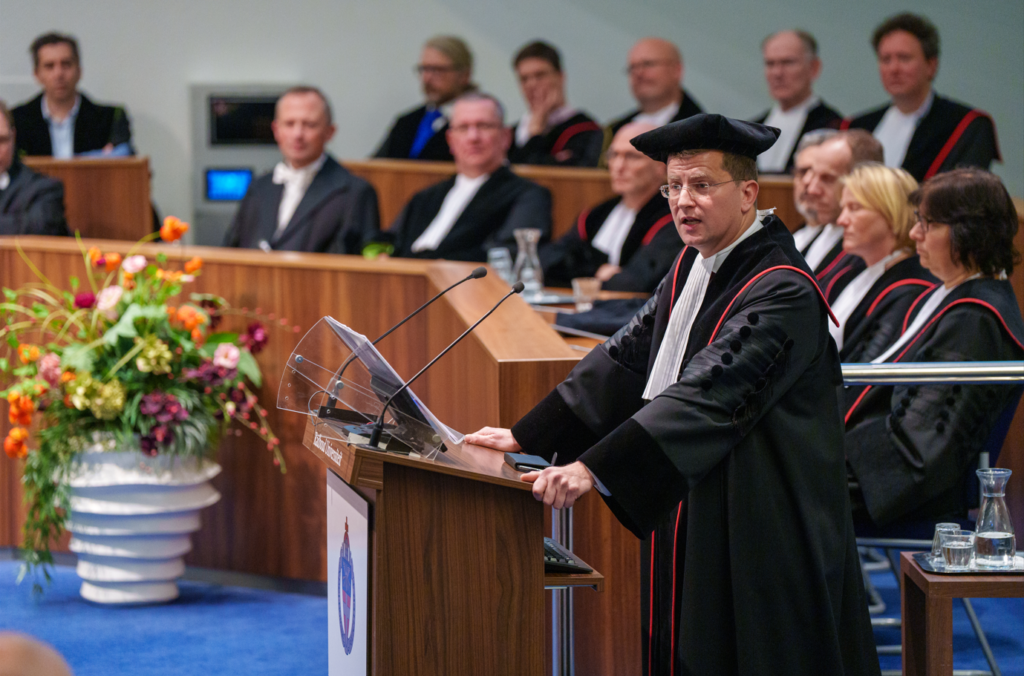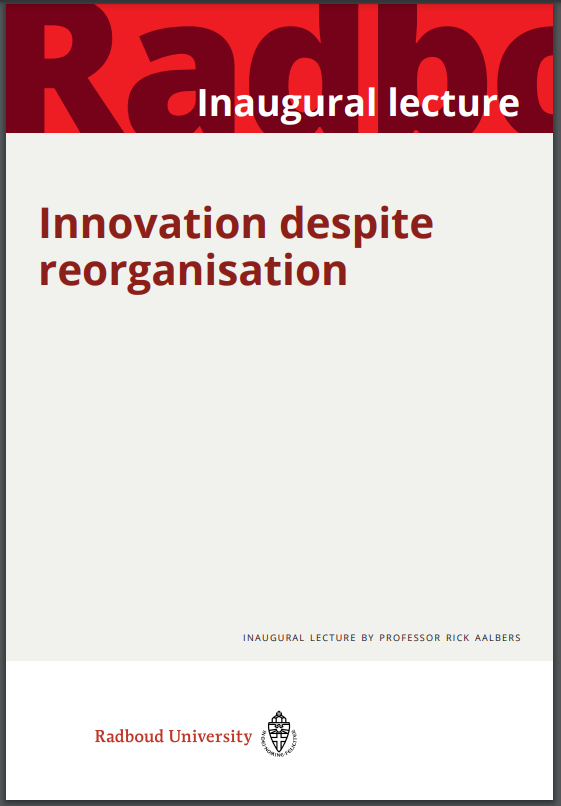In my inaugural lecture earlier this year, I demonstrated how companies rearranged themselves in times both good and bad. I discussed how they aligned their organizational structures with their strategies and changing external conditions, intervened to boost specific activities, and downsized during difficult periods. I touched on the tension between innovation and reorganization, and I reflected on different reorganization strategies: the proactive route of targeted divestitures, disinvestments in business activities, and the more reactive route of forced rounds of redundancies, also known as ‘downsizing.’ I addressed how reorganization affected how innovative organizations were. I explored whether reorganization dampened the creative spark of innovation or served as a catalyst that fueled the fire of future innovation. I attempted to answer the question of whether innovation was possible despite reorganization or rather thanks to it.

Thus happily, there is hope. Intervention is possible well before storm clouds start to gather in the sky. Both innovation and reorganisation play a central role in this. In this inaugural lecture, I argued that innovation is a boon, and periodic reorganisation is a necessity for companies that want to remain relevant in the long term. Indeed, Companies must engage in continuous innovation to effectively compete in the market, not just on isolated occasions. However, achieving profitable innovation requires intentional effort. According to a classic definition by Schumpeter, innovation involves combining new or existing knowledge and resources in an original way, serving as a crucial foundation for realizing economic and other forms of value for the stakeholders associated with a company. Consequently, innovation doesn’t always entail creating entirely new elements; it can involve creatively combining existing elements to generate value and drive progress. Successful innovation demands collaboration. In this context, innovation becomes a dynamic process that necessitates creation, management, measurement, and execution. Only a handful of companies can systematically establish and sustain such a structured approach. I then explored this issue in greater detail as I touched upon some of the factors that determine why some organisations are more resilient than others. I reflected on various answers related to companies’ ability to collaborate both internally and externally as a basis for innovation despite or perhaps even thanks to a reorganisation.

Intervening in a timely way is the credo here, both within and beyond a company. This makes innovation and reorganisation potential springboards for companies’ resilience.
In addition to continuous innovation, strategic reorganization plays a pivotal role in ensuring a company’s ability to innovate, particularly during challenging economic times. A well-executed reorganization can serve as a lifeline for a company, enabling it to adapt to shifting market demands and economic uncertainties. During periods of financial strain, companies often face the dilemma of balancing innovation with cost-effectiveness. Implementing a strategic reorganization allows businesses to realign their internal structures and resources, optimizing efficiency and creating a more conducive environment for innovation. By streamlining processes, reallocating resources, and fostering a culture of adaptability, a company can enhance its resilience and navigate through economic challenges while safeguarding its capacity for innovation. In essence, reorganization becomes a strategic tool that not only addresses immediate economic concerns but also fortifies a company’s long-term ability to stay at the forefront of innovation in a dynamic business landscape.
Thank you to everyone who attended with great enthusiasm, bridging academia and practice, and coming together on this eventful day to celebrate with me.
“Ik heb gezegd.”